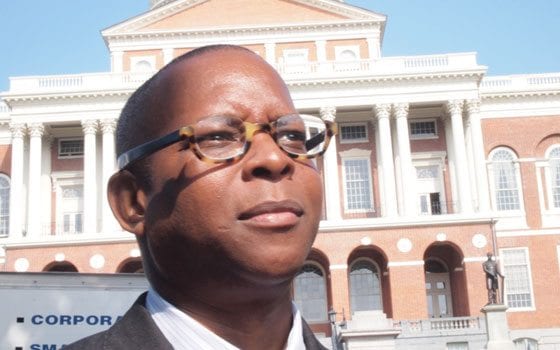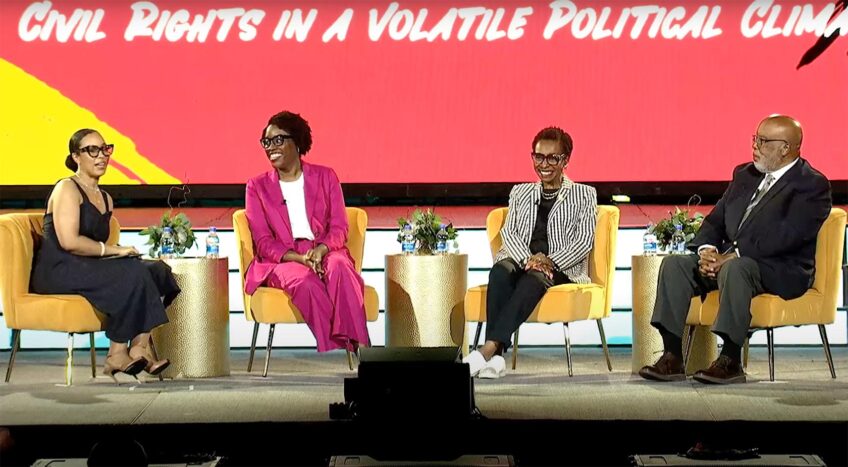
A voter rights coalition is calling for the creation of a new 2nd Suffolk District they say would maximize the political power of the city’s black, Latino and Asian voters and enable a candidate from those communities to be elected to the state Senate.
The map, drawn by the Massachusetts Black Empowerment Coalition, would create a new district that stretches from the Dorchester Neighborhood of Savin Hill in the east to Jackson Square in Jamaica Plain and includes Most of Dorchester and Hyde Park.
The map would move 2nd Suffolk District incumbent Sonia Chang-Diaz into a district that includes much of Jamaica Plain, parts of the South End and the Fenway and all of Brookline. It would push the 1st Suffolk District, currently represented by Jack Hart, out of the southern part of Dorchester and into Boston’s downtown.
MBEC Executive Director Kevin Peterson, who met with the House and Senate redistricting committee chairmen last week said the legislators are open to the idea of a new district.
“Communities of color in the Commonwealth have unique needs which elected officials of color, by nature of their engagement with these issues, are more likely to advocate for,” he said.
The MBEC Senate map is the latest salvo in a redistricting process that has seen unprecedented participation from black, Latino and Asian activists across the state. The Drawing Democracy Coalition, a group funded by a collaborative of nonprofit foundations and charitable donors, has met with organizations across the state and given them technical assistance in redrawing districts in the their own communities.
That group submitted a redrawn Senate map for Boston that would create a nearly two-thirds majority people of color population in both the 1st and 2nd Suffolk districts. The Drawing Democracy Coalition also submitted re-drawn maps that would create districts in Brockton, Stoughton, Boston, Fall River, New Bedford, Lawrence, Lowell, Springfield and Holyoke that would maximize political power for blacks, Latinos and Asians.
In Boston, where more than 50 percent of the population is black, Latino or Asian and only six of the 21 House districts are represented by people of color, the coalition drew nine districts in which people of color make up more than 50 percent of the voting age population.
“We were able to find underrepresented communities throughout the state,” said DDC Co-Chairwoman Malia Lazu.
Lazu said her coalition worked with community groups in the cities across the state, providing them with technical assistance to re-draw the political boundaries in their neighborhoods and weigh in at the 12 community meetings the House and Senate redistricting community held throughout the state.
Both Peterson and Lazu say that members of the redistricting committee are receptive to their ideas. The MBEC’s re-drawn 2nd Suffolk district would be centered in Dorchester and Mattapan, leaving most of Roxbury in the 1st Suffolk District currently represented by Hart.
“The boundaries are debatable and we’re open to redesign,” he said. “These maps aren’t set in stone.”
Both groups have also submitted maps for new congressional districts. The MBEC congressional map reconfigures the 8th Congressional District currently represented by Michael Capuano into what Peterson says is a majority minority district that lumps Brockton, a city where people of color make up the majority of the population, with Boston’s black, Latino and Asian neighborhoods.
Lazu said this year’s process is a welcome change from the redistricting process 10 years ago.
“I think it’s wonderful that we’re having a real dialogue,” she said. “Ten years ago, it all happened under the cloak of night.”
The Legislature is required by state law to re-draw districts after the US Census releases its decennial count. The redrawing of lines ensures that each of the state’s 40 Senate districts and 160 House districts has an equal population so that each person’s vote has equal weight as the state’s population expands, contracts and shifts between regions.
In the ’70s, ’80s, ’90s and ’00s, black, Latino and Asian activists brought suit against the Legislature charging that lawmakers drew district lines that violated the rights of people of color.
Ten years ago, voter rights activists sued the Legislature, charging, among other things, that the new map diluted minority voter strength in then-House Speaker Thomas Finneran’s district by subtracting predominantly black precincts in Dorchester and Mattapan and adding predominantly white precincts in Milton.
Finneran denied having direct involvement or knowledge of the redistricting process and subsequently pled guilty to an obstruction of justice charge and was forced to resign from his House seat.
Redistricting Committee chairmen Sen. Stanley Rosenberg and Rep. Michael Moran say they are hoping to draw up maps by November. The maps will then go before the House and Senate for a vote.







